LIGHTING: INTERVIEW WITH HANSJÖRG SCHMIDT
Hansjörg Schmidt is a lighting designer, and Programme Director of Lighting Design at Rose Bruford College, London. Before joining the college in 2008, he worked as a freelance lighting designer. He graduated with a BA (First Class Honours) in Theatre Arts from Goldsmiths College, University of London and an MSc Built Environment: Light and Lighting from the Bartlett School, UCL.
Tell us about your practice – what it is and what it involves
As a lighting designer I am trying to find ways to support a story through visual means. What that means is that I am thinking about how light (or the absence of it) can be used to help an audience understand what’s happening, often on an emotional rather than an intellectual level. For example, when lighting a scene set at court, I am more thinking about what the emotional tone of that scene is and how the light can support that, instead of necessarily thinking about how a court might look like. So theatre lighting is more like painting than photography — the light is crafted very carefully to heighten a moment or a scene, rather than as a documentary agent that aims to copy a perceived reality
How did you get into theatre lighting design?
When I was at university, I took part in a theatre lighting workshop led by a very inspirational lighting designer, Paule Constable, which made me want to become a lighting designer myself. Prior to that I had always been interested in cinema and visual storytelling and would go to the movies all the time.
What were and are your influences and inspirations?
I am very influenced by cinema — films by Ridley Scott, Sergio Leone, Jim Jarmusch. I also really like looking at the light around me, particularly natural light, such as the shadows of clouds running over a field, or the light reflecting from the water under Waterloo Bridge.
Would you say your work fits into a particular genre/ style?
Not really, although I have some preferences/ways of working. I usually use colour very carefully, and generally prefer not to use coloured lights at all and rather think of another way to show that it’s night time, for example, rather than using a blue coloured light.
Can you explain how practical lighting works, and why you enjoy working in this area?
In theatre when we say practical light, we mean a light that can be used by the actors, such as an angle poise or desk lamp, for example. But more generally we often mean any light that’s not a theatre spotlight. A fluorescent tube, for example, or a light bulb.
The reason I like using practical lights is because they take away the mystery of theatre lighting. Usually in theatre the lights are hidden away, and you don’t see the tools we use to create an image. When we use practical lights, they are usually part of the set, so the audience sees where the light comes from, and ideally know why it’s there. I like the logic and pragmatism of lighting like this – no mystery, everything is in view, and the light becomes a part of the shared performance space, together with the performers, the set and the audience.
Tell us how you have approached lighting for previous shows with Tangle, WORKSHOP NEGATIVE and DOCTOR FAUSTUS.
Anna Coombs, the shows director, wanted to work with practical lights; I think she found it reassuring that these types of lights are easy to understand and manipulate. Using practical lights also makes the lighting design process more straightforward. WORKSHOP NEGATIVE was set in a workshop in Zimbabwe, so we lit the show with lights that you would find in a workshop.
DOCTOR FAUSTUS was more complex; I worked closely with the set designer Colin Falconer on establishing a style for the production. There was a lot of electrical junk scattered around the stage and the suggestion was that the magic in the play was connected to the electricity. So at moments of magic the lights would start to flicker, for example.
Tell us how you have approached the lighting for RICHARD THE SECOND.
The lighting for RICHARD THE SECOND is very influenced by our set designer’s drawings. He included lighting ideas into his storyboard for how the set is used from scene to scene. I really like to collaborate so am really happy if other people in the team have ideas about light, and I try to incorporate as many of these ideas as possible. Now that we can use LED lighting I can control lighting much more closely; the pixelation of LED light is a bit like creating a low-resolution video screen, so I am hoping to use lots of small light sources built into the set to animate every image, and create a sense of moving landscapes and/or the sky.
Can you talk about anything peculiar to practical lighting?
The challenge with practical lighting is that the lights we use are not designed to be used in theatre. So usually, the optical control is much more basic, and the lights don’t give us many options such as changing colour etc. It’s useful to think of practical lights like sculptures or puppets — objects that co-inhabit the stage space — so need a reason for being there. In more practical terms, because the practical lights often end up on stage rather than being attached to lighting bars in the ceiling, we end up with lots of cables all over the stage, so cable management and safety is very important.
